by Kyle Buchter
Quadratec Trail Boss
With the calendar now fully engaged into the winter season, many out there are seeing driving conditions take a turn for the worse. And for some, that means gripping the steering wheel a bit tighter and hoping for the best as they scoot about town doing errands or going back and forth to work.
Jeep drivers look at things differently, though. They can start prepping for their first chance to play in the snow weeks in advance. Now that could mean playtime can go from doing donuts in parking lots, to cruising snow-covered streets, all the way to full-blown adventures in the woods.
However you plan to attack winter driving in your Jeep this season, you should know that preparation for your snow trip can make all the difference between spending your time driving — or spending it recovering.
This is when you start hearing “Oh, I wont get stuck” or “You just hit it harder and faster.”
But the truth is, no matter your experience level, you can get stuck in winter conditions, and trying to bully your way out will usually only make things worse.
So here are some proven tips to help you be the one who makes it out and back safely.
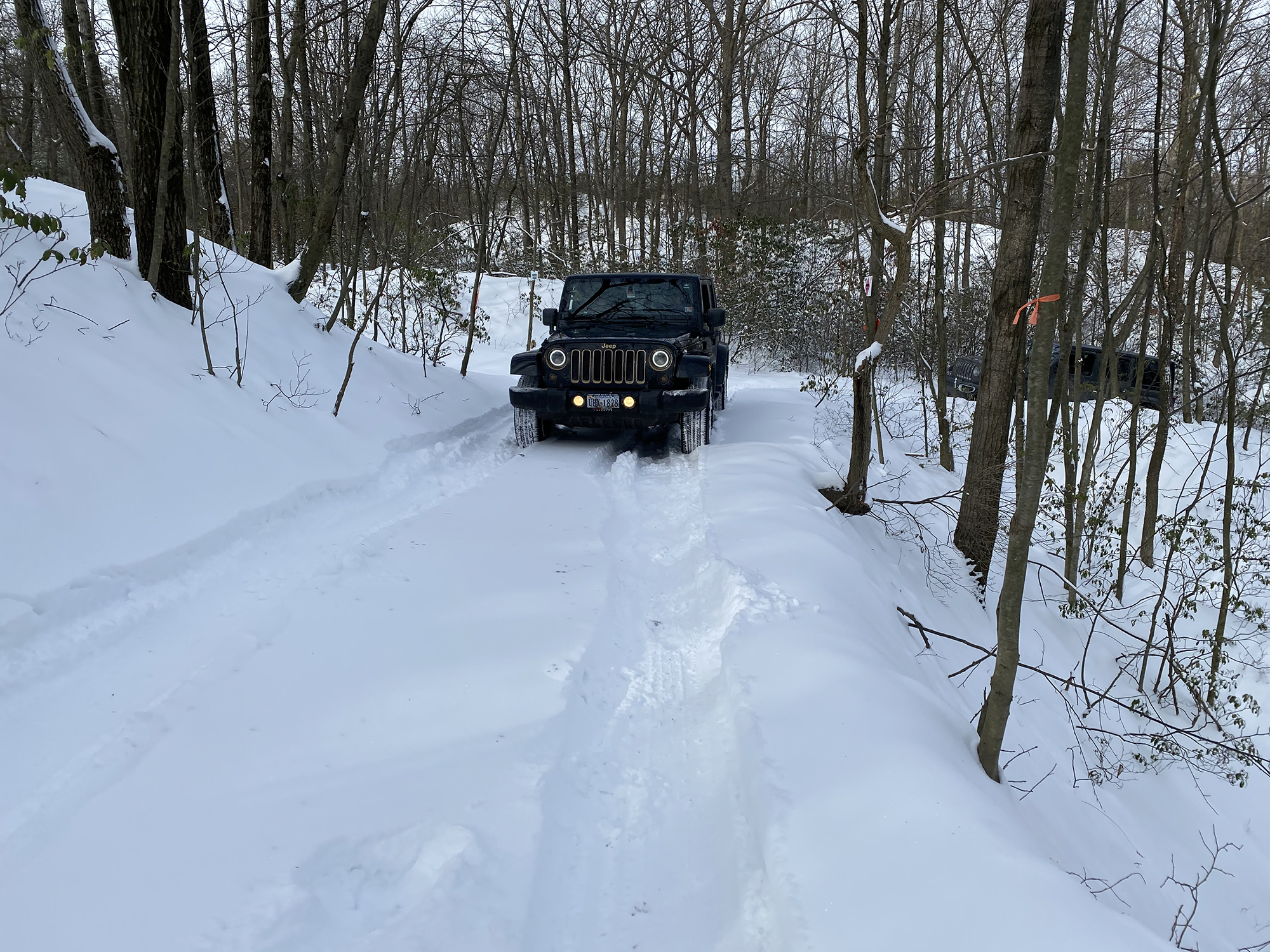
Winter driving is really all about the attitude in which you drive. You need to read and understand the terrain and the conditions. Things like type of snow, temperature, moisture, snow depth, type of terrain, slope and your vehicle set up are all variables that can determine what type of day you will have out there.
Additionally, factor in what speed realistically is best for the current conditions. Sure, there are some spots where you need to carry a little momentum, but keep in mind the faster you go, the longer it takes you to stop. These all play into the off-road trail you may want to run as well. If you just gas it and hope, then you will most likely have to deal with some difficult consequences. Alternatively, try out the snow in an easier area first, if possible, to see what things will be like during your ride.
When it comes to donuts, two-wheel drive is the way to go. But when you are driving down a trail covered in snow, that same set up can be dangerous. Is it worth the risk driving around in two-wheel drive? Well, think about how much it will cost to repair your vehicle should you slide off the trail and hit something like a tree or larger rocks. This is why understanding your four-wheel drive system is important. After all, you already paid for it so you may as well use the thing.
Now, between the different four-wheel drive settings, using four-high is good for areas where you can go somewhere around 20 miles-per-hour or so. If conditions force you to go slower for an extended period, then four-low will be safer. One major difference between the two settings is the initial power. Will conditions dictate the vehicle needs to load up slightly to move, or will it have good gear power right off? Remember, spinning tires are tires that are not getting adequate traction. That spinning can also dig you deeper into snow and cause a recovery situation.
One of the most important things you can do when winter driving is to read the terrain and determine what trail conditions are under the snow. That’s because snow can hide a lot of pitfalls. Small bumps can be rocks or debris that you could hit. Washouts and depressions may be masked by small snow drifts. So always pay attention to that snow appearance, and be aware of your terrain and situation. Additionally, watch for glare and shadows as well. The more you watch, pay attention and approach things with caution, the safer you will be out there.
Tire pressure can help or hurt depending on conditions, and the type and depth of snow is what will determine the right pressure. Keep in mind though that the right tire pressure can change throughout the day with changing weather conditions. How deep is the snow? Is it a wet snow or a dry fluffy snow? Does it move easily or does it pack to ice?
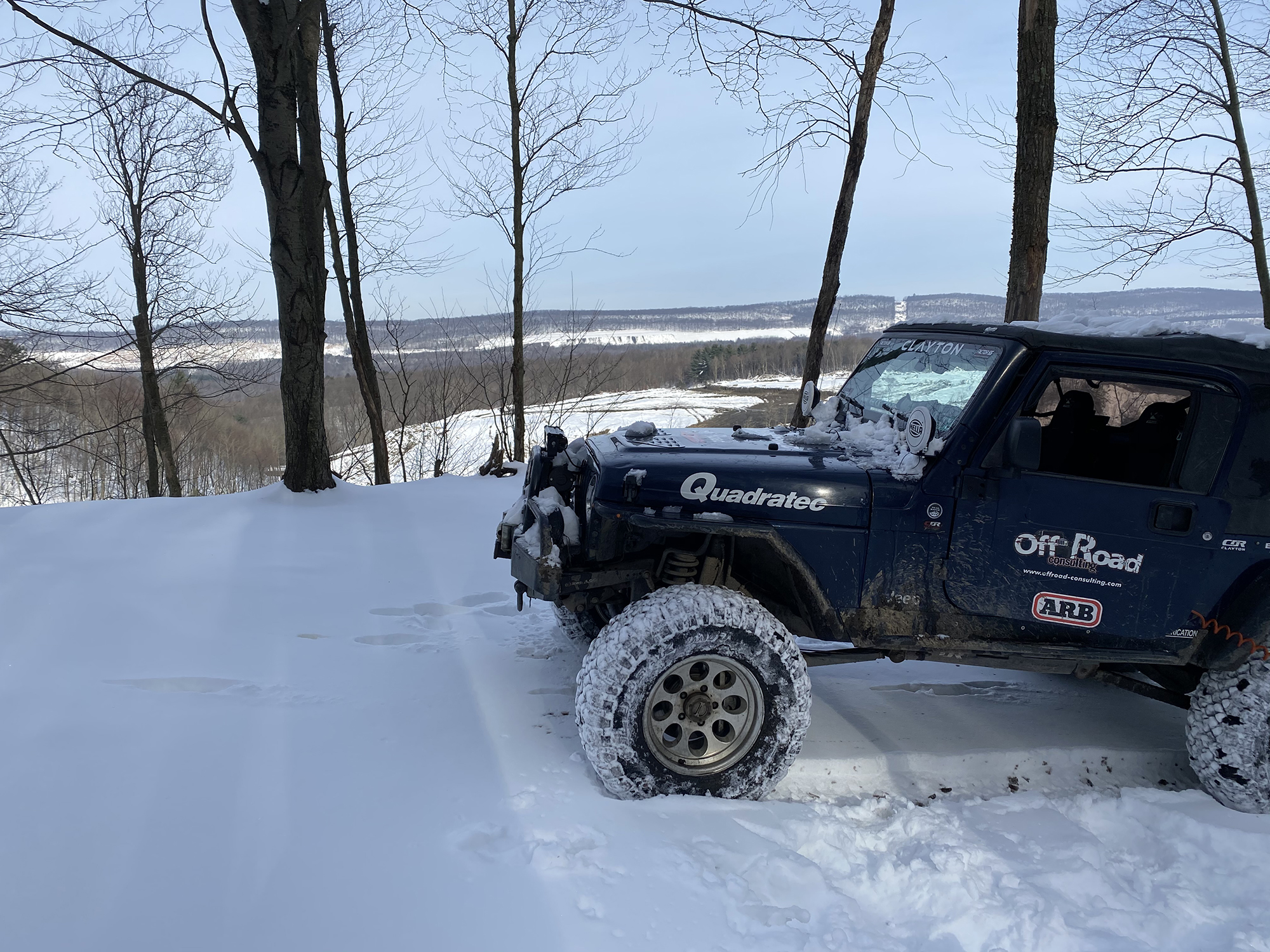
Some snow you want to float across the top so you will need a wider flatter tire, other snow you need to cut through to the surface below. If the snow packs to ice, then it can become very slippery with a wider, flatter tire. Some of these conditions may also require a set of tire chains in order to gain best traction.
Changing weather conditions throughout the day can mess things up as well. For instance, if it is cold and below freezing in the morning then the snow will be harder and may pack to ice. As the day goes on and that snow starts to melt, it will become slushier. Pay attention and adjust to what you need. You may have to air up or down a little depending on conditions.
Hills and off-camber areas can be a little intimidating during the winter season. Gravity is going to work no matter what and can really give you mixed levels of failure versus success. So factor in the slopes and where are you going to end up. Start slow and in a low gear to crawl your way down a slippery hill. Aim for the choppier areas to give you a little traction if needed.
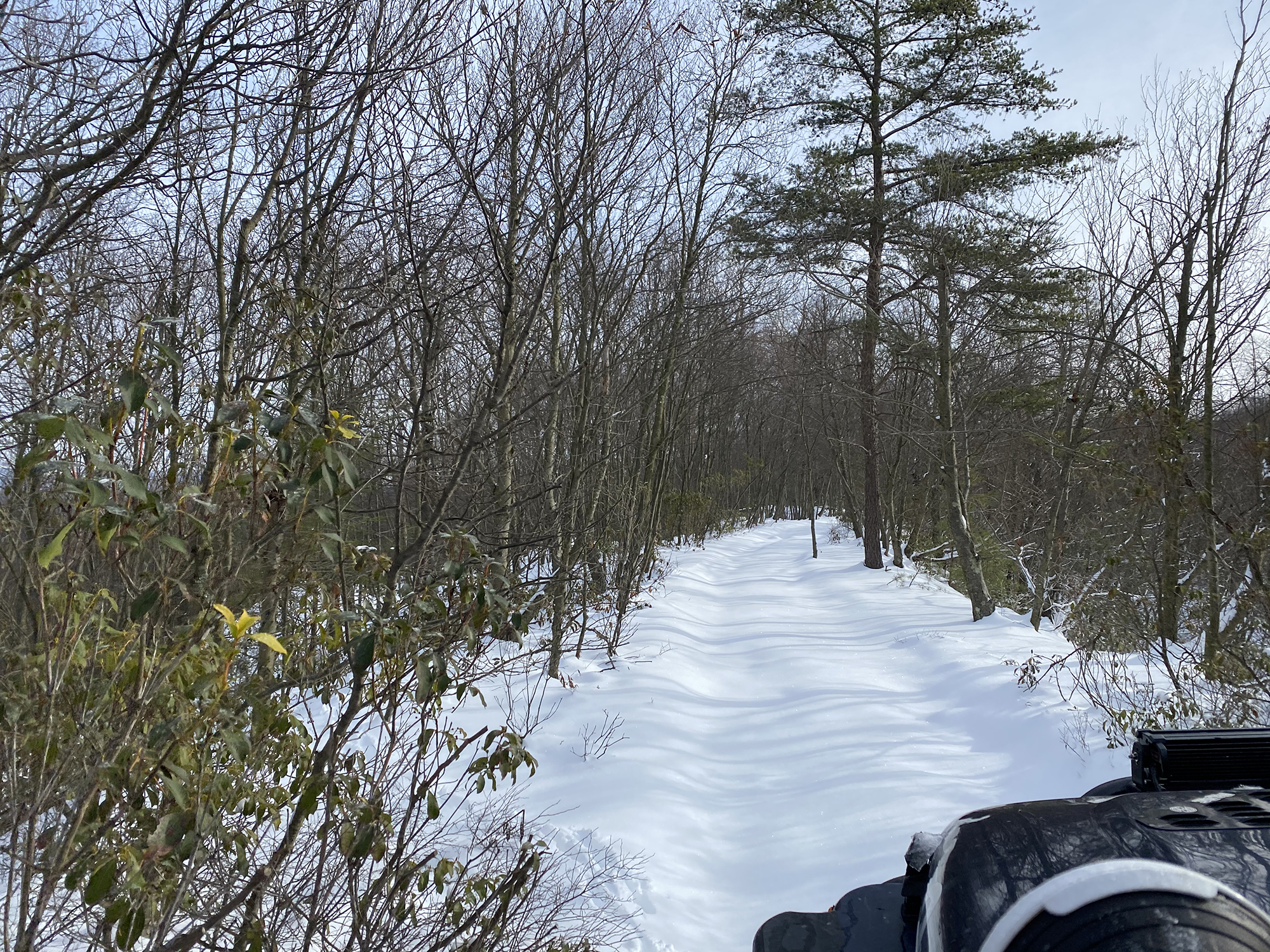
Fresh snow can also be used for resistance to help hold you from sliding. This also works well for driving uphill. The tracks on a trail can easily become icy, so if you aim for the fresh snow then it should give you more traction. Uphill driving does require a little momentum and controlling your spinning.
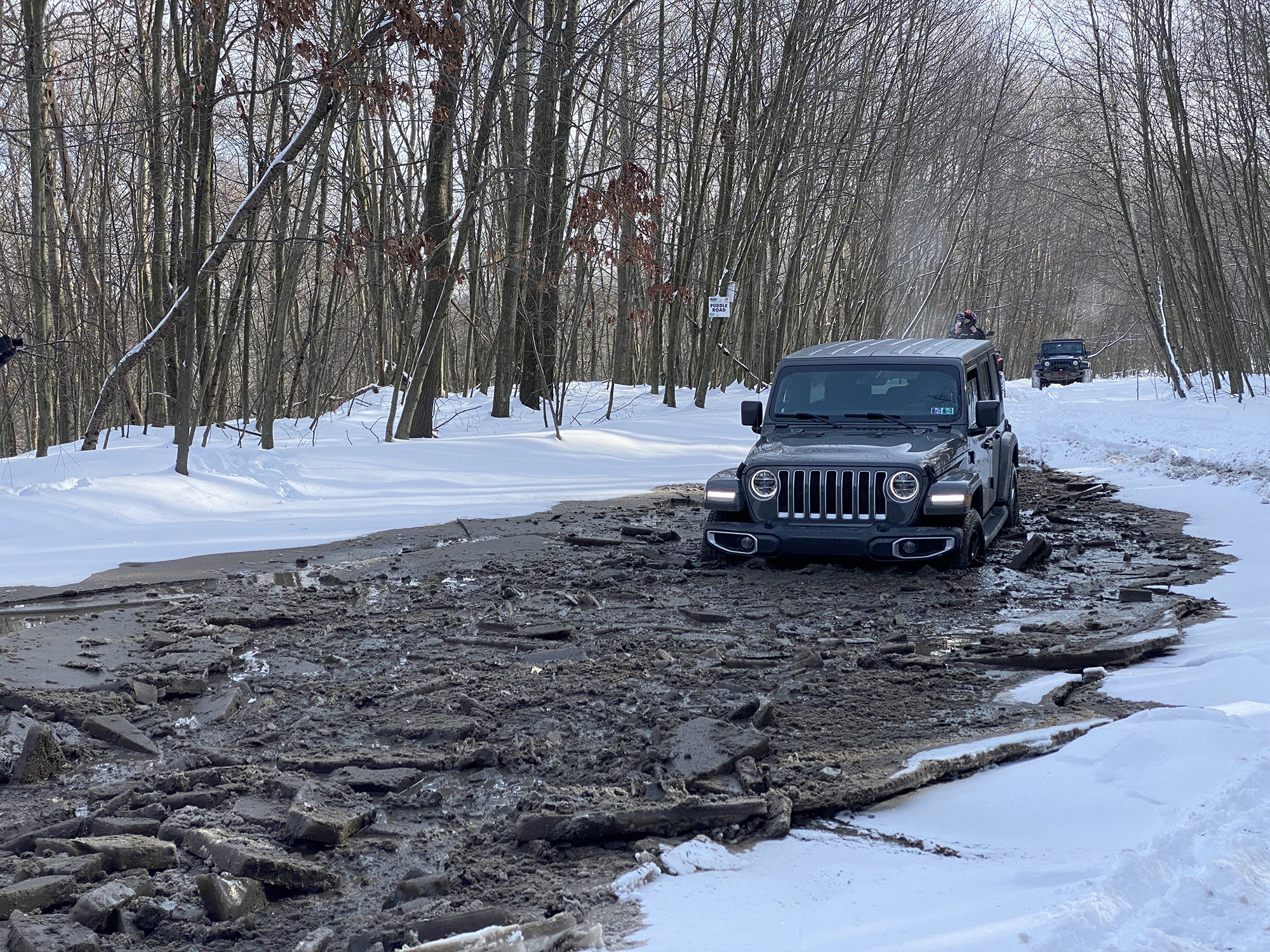
Some other small things that require attention are anything on the vehicle that can be damaged or affected by the snow or ice. Watch those brake lines and hoses, and approach icy water with caution. Those ice chunks can break a plastic bumper or easily cut a brake line. Additionally, keep your tire valve stem caps on. A little water in the valve stem can freeze and make it a real pain later when you are trying to air up those tires.
After any snow excursion, make sure to give your vehicle a good inspection to determine if there is any damage. Also, throughout the day, pay attention to where snow and ice are packed on the Jeep and try to remove. A completely packed undercarriage can restrict movement of parts and air flow. Having ice packed on your wheels will cause possible vibrations while driving until heat from the brakes and/or the tire rotation clears it off. Check out any ice chunks collecting in skid plates and other areas of vulnerability underneath the vehicle and clear accordingly.
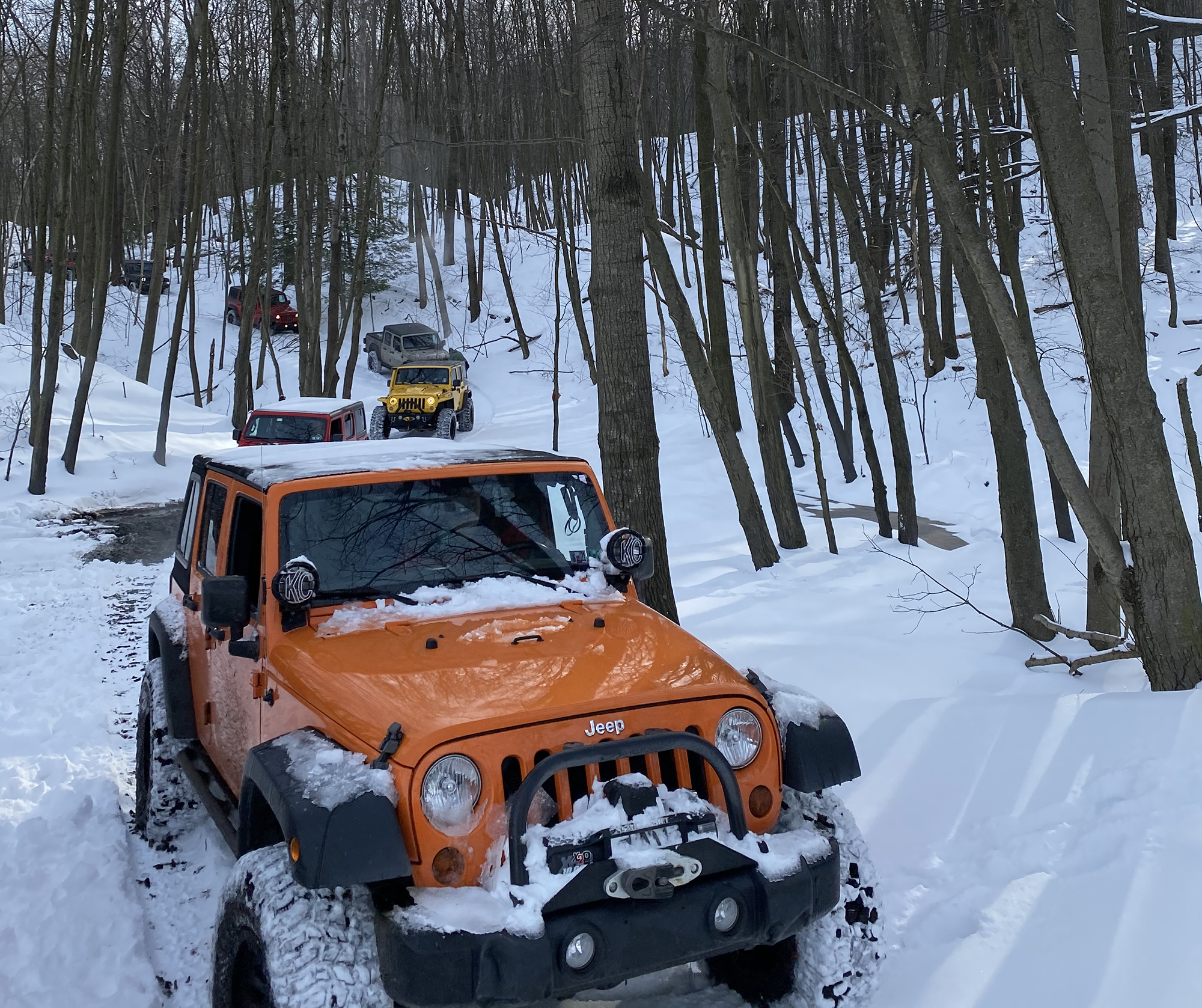
If you or someone else ends up needing a recovery, make sure you use proper techniques and gear. Snow can make recoveries easier by providing slide, however it can also add lots of resistance and technical challenges. Always carry a good recovery kit with you no matter the season and learn how to use it before heading out on a ride. Winching and recovery is not as simple as people think, especially in the winter. There is a lot of technique that goes into proper rigging — not only for the vehicle’s safety, but yours as well.
Don’t forget to pack a proper winter bag as well. This can include warm clothing (a spare set including additional socks), plenty of water, food, communication equipment, change of shoes (waterproof and warm), first aid items and much more. Making sure you have the proper equipment for the day can be just as important as understanding driving conditions.
Winter driving can be exciting and provide some beautiful scenery you just won't find anywhere else. So to fully enjoy everything, make sure you are prepared, employ proper driving techniques to match conditions, stay safe and get back home in one piece.





















